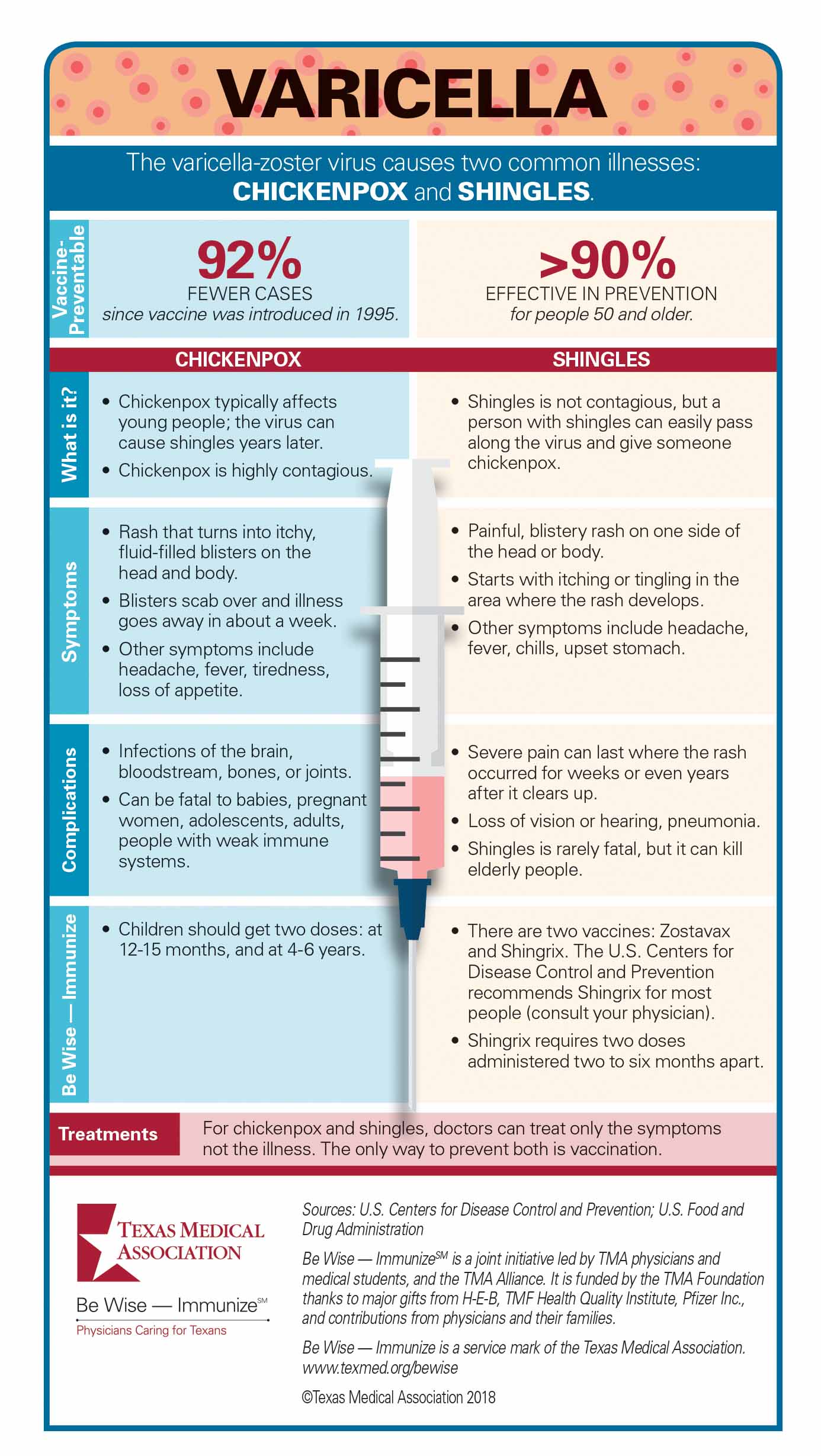Remember those itchy pockmarks so many people used to get as kids? That’s the varicella-zoster virus, or chickenpox. Parents and patients might not know that same virus does double-duty: It can cause chickenpox when you’re young and reactivate later in life as a painful, blistery rash called shingles.
Well, there’s a vaccine for each disease.
Since 1995, the chickenpox vaccine has led to 92 percent fewer cases of the illness, 84 percent fewer hospitalizations, and a 90-percent drop in deaths, the U.S. Centers for Disease Control and Prevention (CDC) reports. It is a required vaccine for attending school in Texas.
Those who get the chickenpox vaccine have little chance of getting shingles. But most older Americans have not been vaccinated, and CDC says more than 90 percent of Americans 40 or older have had chickenpox, whether they remember.
As a result, about one in three people in the U.S. will develop shingles, and the risk of this painful illness grows as people age.
Until 2018, Zostavax was the only shingles vaccination available. It reduces the risk of shingles by 51 percent and protects for about five years. For most patients, CDC now recommends a new vaccine called Shingrix. It is 97-percent effective for those 50-69, and 91-percent effective for those 70 and older.
There is a lot of misinformation about vaccines, so each month Texas Medicine highlights a disease that can be prevented by childhood and adult immunizations. The material is designed to help you talk to your patients and to help them understand the benefits of vaccines.
Download a printable copy of the infographic below.

Tex Med. 2018;114(9):46
Texas Medicine Main Page
Last Updated On
September 19, 2024
Originally Published On
August 29, 2018